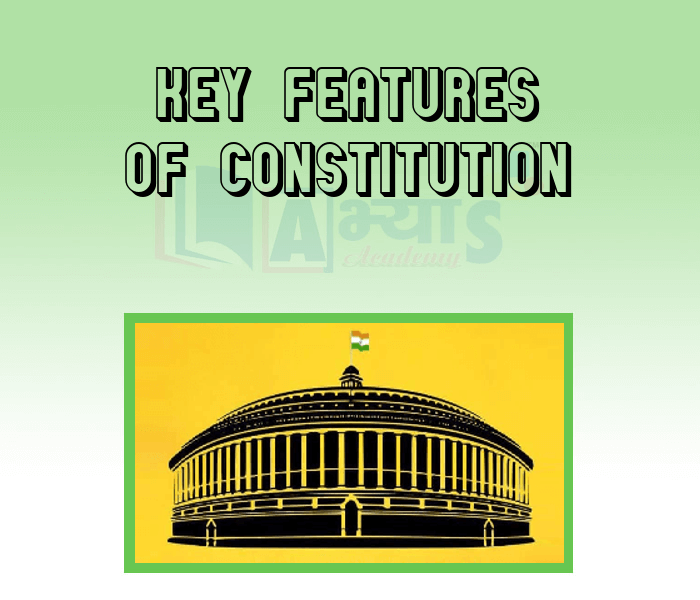Key Features of Constitution


Key Features of the Constitution
Following are the salient features of the Indian Constitution
(1) Longest Written Constitution --The constitutions divided into two sections written such as the US Constitution and the unwritten such as the UK Constitution. The Constitution of India is the longest Written Constitution in the World. The main reason for its vastness is the detailed description of the formation and powers of both the Central and Provincial Government
Which of the following are correct : (a) The original Constitution of India (1949) contained a Preamble, 395 Articles, 22 Parts and 8 Schedules. (b) The Directive Principles of State Policy are mentioned in Articles 36 to 51 in the Constitution of India. | |||
| Right Option : C | |||
| View Explanation | |||
At present, how many Fundamental Rights Indian Citizens have in Constitution of India ? | |||
| Right Option : B | |||
| View Explanation | |||
_______________________ has called the Indian Constitution the largest and most comprehensive constitution in the World. | |||
| Right Option : C | |||
| View Explanation | |||
Students / Parents Reviews [10]
About Abhyas metholodology the teachers are very nice and hardworking toward students.The Centre Head Mrs Anu Sethi is also a brilliant teacher.Abhyas has taught me how to overcome problems and has always taken my doubts and suppoeted me.

Shreya Shrivastava
8thMy experience with Abhyas is very good. I have learnt many things here like vedic maths and reasoning also. Teachers here first take our doubts and then there are assignments to verify our weak points.

Shivam Rana
7thIt was a good experience with Abhyas Academy. I even faced problems in starting but slowly and steadily overcomed. Especially reasoning classes helped me a lot.

Cheshta
10thAbhyas Methodology is very good. It is based on according to student and each child manages accordingly to its properly. Methodology has improved the abilities of students to shine them in future.

Manish Kumar
10thOne of the best institutes to develope a child interest in studies.Provides SST and English knowledge also unlike other institutes. Teachers are co operative and friendly online tests andPPT develope practical knowledge also.

Aman Kumar Shrivastava
10thMy experience was very good with Abhyas academy. I am studying here from 6th class and I am satisfied by its results in my life. I improved a lot here ahead of school syllabus.

Ayan Ghosh
8thAbhyas is a complete education Institute. Here extreme care is taken by teacher with the help of regular exam. Extra classes also conducted by the institute, if the student is weak.

Om Umang
10thIt was good as the experience because as we had come here we had been improved in a such envirnment created here.Extra is taught which is beneficial for future.

Eshan Arora
8thI have spent a wonderful time in Abhyas academy. It has made my reasoning more apt, English more stronger and Maths an interesting subject for me. It has given me a habbit of self studying

Yatharthi Sharma
10thA marvelous experience with Abhyas. I am glad to share that my ward has achieved more than enough at the Ambala ABHYAS centre. Years have passed on and more and more he has gained. May the centre flourish and develop day by day by the grace of God.
